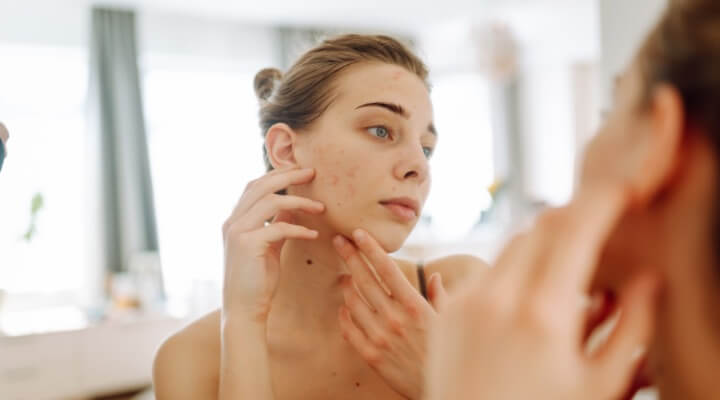Folliculitis and Hormonal Disorders: What Beauticians Need to Know
As a beautician, staying informed about skin and hair conditions is crucial for providing the best care to your clients. An often overlooked yet significant topic is folliculitis and its connection with hormonal disorders. Understanding this relationship is vital for effectively managing and treating your clients' skin and hair issues.
Folliculitis refers to the inflammation of hair follicles, often resulting in red, bumpy skin. While it can be caused by bacterial or fungal infections, hormonal changes can also play a pivotal role. Hormonal fluctuations can exacerbate or even trigger folliculitis, making it essential for beauticians to understand this dynamic.

Recognizing the Symptoms
To effectively address folliculitis, it's important to recognize its symptoms. These can include clusters of small red bumps or white-headed pimples around hair follicles. Clients may experience itching, tenderness, or even pain in affected areas, which can significantly impact their comfort and confidence.
Understanding the symptoms of folliculitis can help beauticians identify the condition early, allowing for timely intervention and appropriate care strategies. For a comprehensive understanding of folliculitis symptoms, refer to Health Direct.
The Hormonal Connection
Hormonal disorders such as polycystic ovary syndrome (PCOS) or thyroid imbalances can disrupt the normal functioning of hair follicles, leading to conditions like folliculitis. When hormones are imbalanced, they can increase oil production, block hair follicles, and create an environment conducive to bacterial growth.
Beauticians should be aware of these hormonal influences to tailor their treatments accordingly. By understanding the root cause of folliculitis in clients, beauticians can develop targeted skincare routines and recommend appropriate products for managing hormonal skin issues. More insights on the connection between hormones and skin conditions can be found in this comprehensive study.
Identifying At-Risk Clients
It's important for beauticians to identify clients who may be at a higher risk of developing folliculitis due to hormonal disorders. Clients with conditions like PCOS or those undergoing hormonal treatments may require more specialized care and advice.
By conducting thorough consultations and asking targeted questions about a client's medical history, beauticians can better understand the potential underlying causes of skin conditions. This proactive approach enables personalized care and helps build trust with clients.
Effective Treatment Strategies
Once folliculitis is identified, implementing effective treatment strategies is key. Beauticians can recommend gentle cleansing routines, exfoliation to prevent clogged pores, and the use of non-comedogenic products to minimize irritation.
For clients with hormonal disorders, incorporating products with anti-inflammatory and antimicrobial properties can be particularly beneficial. It's also important to educate clients about the importance of consistency in their skincare routines to manage the condition effectively.
For more detailed treatment approaches, check out this informative article on Folliculitis and Dermatitis.
Preventive Measures and Client Education
Prevention plays a crucial role in managing folliculitis. Beauticians can educate clients on the importance of maintaining good hygiene, avoiding tight clothing, and managing stress levels, as these factors can contribute to flare-ups.
Offering personalized advice on dietary choices and lifestyle modifications can empower clients to take a proactive approach to their skin health. By sharing knowledge and insights, beauticians can foster a collaborative relationship with their clients, enhancing their overall experience.
Additional Resources
For beauticians seeking to deepen their understanding of folliculitis and hormonal disorders, there are numerous resources available. The MSD Manual offers a wealth of information on skin disorders, providing valuable insights into diagnosis and treatment options.
Additionally, exploring case studies and research articles can offer practical insights and help beauticians stay updated with the latest developments in the field. For instance, the article on Hot Tub Folliculitis Causes provides insights into how environmental factors can contribute to this condition.

Conclusion
Understanding the intricate relationship between folliculitis and hormonal disorders is essential for beauticians striving to provide comprehensive care to their clients. By recognizing symptoms, identifying at-risk clients, and implementing effective treatment strategies, beauticians can make a significant impact on their clients' skin health.
By staying informed and continually expanding their knowledge, beauticians can offer valuable guidance and support to clients dealing with these challenging skin conditions. Embracing a holistic approach to skincare not only enhances client satisfaction but also establishes beauticians as trusted experts in their field.
FAQs
What is folliculitis?
Folliculitis is the inflammation of hair follicles, resulting in red, bumpy skin. It can be caused by bacterial or fungal infections, as well as hormonal changes.
Can hormonal disorders cause folliculitis?
Yes, hormonal disorders such as polycystic ovary syndrome (PCOS) or thyroid imbalances can disrupt hair follicle function and contribute to folliculitis.
How can beauticians help clients with folliculitis?
Beauticians can help by identifying symptoms, recommending appropriate skincare routines, and educating clients on preventive measures to manage folliculitis effectively.

